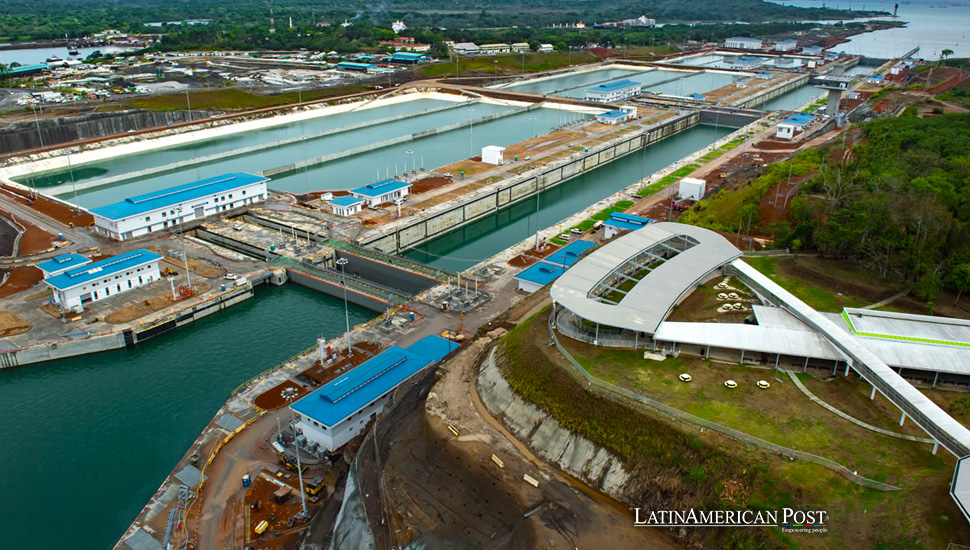Panama Canal’s Drought Crisis to Affect Global Trade

A devastating drought in Panama has led to a 36% reduction in ship crossings through the vital Panama Canal. This unprecedented challenge has sent shockwaves through the global trade community, raising concerns about its impact on international shipping.
The Panama Canal in Crisis
Recently, the Panama Canal, one of the most essential arteries for global trade, has grappled with an unprecedented crisis—the severe drought that has gripped the Central American nation. The impact of this environmental catastrophe reaches far beyond the canal’s waters, stirring chaos and uncertainty in the world of international shipping and trade.
The drastic measures announced by Panama Canal authorities on Wednesday underscore the magnitude of the economic blow facing the iconic waterway. With an anticipated cost ranging between $500 million and $700 million in 2024, a sharp increase from previous estimates of $200 million, the toll of the drought on the canal’s operations looms large. This dire situation has prompted a vital reassessment of the canal’s reliability and resilience as a linchpin of the global trade network.
Economic Blow: Canal Authorities Announce Drastic Measures
The drought’s toll is unmistakable, with the maritime route experiencing a traffic jam of vessels and a substantial decline in cargo volume. Gradually reduced ship crossings, now set at 24 daily, represent a stark departure from the norm of 38 daily crossings. The fallout is evident, with a 20% reduction in cargo and 791 fewer ships passing through the canal in the first quarter of the fiscal year compared to the previous year—a sobering testament to the severity of the crisis.
Amidst the upheaval, efforts to mitigate the crisis have yielded some temporary respite. Implementing “efficient” water management practices and a surge in rainfall in November have ensured that water levels are sufficient to accommodate the reduced ship crossings until the end of April, signaling a brief reprieve before the onset of the next rainy season.
Roots of the Crisis: El Niño and Climate Change
The origins of the drought are attributed to the El Niño weather phenomenon and the ominous specter of climate change, further underscoring the urgency for Panama to secure alternative water sources critical for both the canal’s operations and human consumption. The same lakes that nourish the canal also serve as a vital water source for over half of Panama’s population, amplifying the far-reaching and existential implications of the water crisis.
As the canal confronts the drought’s profound challenges, its resilience and adaptability are tested against global trade concerns. The pantheon of stakeholders invested in the smooth and efficient canal operation—ranging from shippers and traders to nations reliant on its services—find themselves at a critical juncture, compelled to grapple with the ramifications of this unexpected turmoil.
Pivotal Concern: The World Watches Panama’s Response
The Panama Canal’s ability to weather this crisis and emerge more robust is a pivotal global concern. The repercussions of the drought ripple through the intricate web of international trade, casting a shadow of doubt on the predictability and sustainability of this vital trade route. This unforeseen challenge compels a collective call to action and a concerted commitment to fortify the canal’s resilience in the face of environmental vulnerabilities.
Symbolic Test: The Canal’s Role in the Face of Adversity
Amid the churning waters of uncertainty, the international trade community looks to the canal as a barometer of stability and a testament to human ingenuity. The management of this crisis stands as a symbolic test of our capacity to navigate adversity and bolster the foundations of global trade against the forces of nature.
As Panama embarks on an arduous journey to confront the specter of drought and safeguard the future of the Panama Canal, the world watches with bated breath. The outcomes of this trial will not only shape the canal’s trajectory but also resonate deeply within the realm of international trade, underscoring the imperative of resilience, adaptability, and proactive measures in safeguarding the vital arteries that sustain global commerce.
Alsso read: Argentina Inflation Surges Past 210%, Challenging Milei’s Government
The Panama Canal’s saga of resilience amidst environmental tumult echoes across the seas. It reverberates through the annals of global trade, reminding us of the intrinsic link between nature’s unpredictability and our shared destiny in commerce. As the world navigates these troubled waters, the Panama Canal’s resolve to overcome this crisis embodies a testament to the enduring spirit of human enterprise and the collective determination to chart a course to stability and prosperity.




